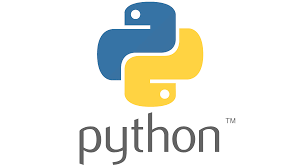
A minor typing error can result in an error in any programming language as we must follow the syntax rules when coding in any programming language.
Python Errors:
We can make mistakes when writing a program that causes errors when we run it. When a Python program encounters an unhandled error, it crashes. An exception is a Python object that represents an error. The various types of Python errors are broadly classified as follows:
- Syntax errors
- Logic errors
Syntax Errors:
This is the most common and basic type of error scenario. The most common cause of an error in a Python program is the incorrect use of a statement. A syntax error, also known as a parsing error, is a type of error like this. The Python interpreter reports it quickly, usually with an explanation.
Example:
print"Hello world"Output:
File "<string>", line 1
print"Hello world"
^
SyntaxError: invalid syntaxExample:
a = 10
if a < 20
print('Value of a less than 20')Output:
File "<string>", line 3
if a < 20
^
SyntaxError: invalid syntaxWhat is an Exception?
In contrast to syntax errors, exceptions are types of errors that occur as a result of code malfunctioning during execution. Exceptions are errors that occur during execution. In Python, all the exception classes are derived from the BaseException class.
Example:
print(5/0)Output:
Traceback (most recent call last):
File "<string>", line 1, in <module>
ZeroDivisionError: division by zeroIt can be seen that dividing five by zero results in ZeroDivisionError, which is a child of the ArithmeticError class.
Python Exception Message Decoding:
- Traceback: In the exception message, the term Traceback means that Python has traced back the code to the point where the exception occurred and will show the related messages after this line.
- File “<string>”, line 1, in <module>: this line tells us the name of the python file and the exact line number for the code due to which the exception was generated.
- ZeroDivisionError: This is the type of exception that has occurred.
In-built Python Exception:
Now that we understand what an exception is, let’s look at a list of Python exceptions. Try to recall if you’ve ever encountered any of these Python exceptions as you read the list.
| Exception | Cause of Error |
| AssertionError | When an assert statement fails, an error is raised. |
| ArithmeticError | It specifies when a numerical calculation error occurs. |
| AttributeError | This exception is thrown when an attribute assignment or reference fails. |
| EOFError | When the input() method comes across an “end of file” situation, it throws an error (EOF) |
| FloatingPointError | When a floating-point calculation fails, this error is generated. |
| GeneratorExit | When the close() method of a generator is called, this variable is raised. |
| ImportError | When the imported module cannot be found, this exception is thrown. |
| IndexError | When the index of a sequence is out of range, this value is raised. |
| KeyError | When a key is not found in a dictionary, this error is raised. |
| KeyboardInterrupt | When the user pushes Ctrl+C, Ctrl+Z, or Delete, this exception is thrown. |
| MemoryError | When a program runs out of memory, an error is generated. |
| NameError | When a variable is not discovered in the local or global scope, this exception is raised. |
| NotImplementedError | Raised through abstract methods. |
| OSError | When a system operation results in a system-related error, this flag is raised. |
| OverflowError | When the result of a numerical calculation is too huge, an error is raised. |
| ReferenceError | This Is an Exception When a weak reference object does not exist, an error is raised. |
| RuntimeError | When an error does not fit into any of the other categories, it is raised. |
| StopIteration | Raised by the next() function to indicate that the iterator has no more items to return. |
| SyntaxError | When a syntax problem occurs, the parser raises this exception. |
| IndentationError | It raises an error when the indentation is incorrect. |
| TabError | It raises an error when the indentation consists of tabs or spaces. |
| SystemError | It is triggered when a system error occurs. |
| SystemExit | The sys.exit() function raised this exception. |
| TypeError | When a function or operation is applied to an object of the wrong type, this exception is raised. |
| UnboundLocalError | When a reference to a local variable in a function or method is made but no value is bound to that variable, an exception is raised. |
| UnicodeError | When a Unicode-related encoding or decoding problem occurs, this flag is raised. |
| UnicodeEncodeError | When a Unicode-related problem occurs during encoding, this flag is raised. |
| UnicodeDecodeError | When a Unicode-related error occurs while decoding, this flag is raised. |
| UnicodeTranslateError | It defines an error. When there is an issue with a Unicode translation, this flag is raised. |
| ValueError | When there is an incorrect value in a specified data type, this exception is raised. |
| ZeroDivisionError | When the second operator in a division is zero, an error is raised. |
If necessary, we can even define our own exceptions in Python. We can manage these built-in and user-defined exceptions in Python using try, except, and finally statements.
Note: also read about Static Keyword in Python
Follow Me
Please follow me to read my latest post on programming and technology if you like my post.
https://www.instagram.com/coderz.py/
https://www.facebook.com/coderz.py
Staying up to the mark is what defines me. Hi all! I’m Rabecca Fatima a keen learner, great enthusiast, ready to take new challenges as stepping stones towards flying colors.
Leave a Comment
You must be logged in to post a comment.